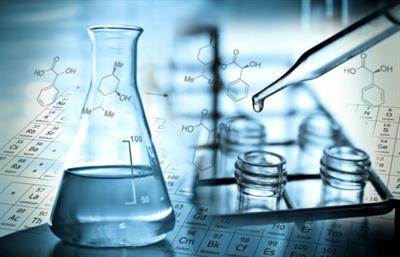The Total Guide to Recognizing and Utilizing Chemical Products Securely
The Total Guide to Recognizing and Utilizing Chemical Products Securely
Blog Article
Trick Factors To Consider for Picking the Right Chemical Products to Attain Efficient Integrated Solutions in Your Workflow
Picking the appropriate chemical products for incorporated services in operations requires a diverse approach that includes different essential factors to consider. From analyzing chemical compatibility to guaranteeing adherence to regulative requirements, each variable plays a pivotal function in enhancing operational effectiveness and safety.
Comprehending Chemical Compatibility

To assess compatibility, one must take into consideration variables such as the chemical residential properties of the compounds included, including pH, concentration, temperature, and the visibility of pollutants. Making use of compatibility graphes and databases can offer important insights right into prospective communications. Additionally, performing small tests can aid determine unforeseen reactions that may not be documented.
Aspects such as moisture, light exposure, and temperature level can affect the security and reactivity of chemical items. By focusing on chemical compatibility during the choice process, organizations can boost functional performance, minimize the threat of mishaps, and make sure conformity with safety and security procedures.
Reviewing Regulative Compliance
In the complex landscape of chemical product selection, evaluating regulatory compliance is vital to guaranteeing not just safety and security however also legal adherence. Organizations has to browse a myriad of guidelines, from regional and national regulations to worldwide requirements, that regulate the usage, storage, and disposal of chemical substances. This needs an extensive understanding of appropriate regulations such as the Occupational Security and Health And Wellness Administration (OSHA) criteria, the Environmental Defense Agency (EPA) guidelines, and the European Union's Enrollment, Evaluation, Authorisation and Constraint of Chemicals (REACH)
When selecting chemical products, it is important to validate that suppliers offer Security Information Sheets (SDS) that detail potential risks and handling demands. Services should verify that the chemicals abide with industry-specific regulations, which may impose added terms. Non-compliance can result in extreme fines, including penalties and functional shutdowns.
Furthermore, companies should remain upgraded on regulative changes, as non-compliance can arise from out-of-date practices. Establishing a robust compliance technique, including routine audits and employee training, can help ensure adherence to existing laws. Ultimately, prioritizing governing compliance not just reduces risk but likewise boosts the organization's credibility and operational effectiveness.
Assessing Environmental Effect
Exactly how can companies efficiently analyze the environmental effect of chemical items throughout the choice procedure? A thorough analysis calls for a diverse approach, integrating data on the life process of items, from production to disposal. Organizations should start by recognizing the possible threats related to each chemical, including toxicity, perseverance in the setting, and bioaccumulation possibility. Making use of tools such as Safety and security Data Sheets (SDS) and ecological danger analyses makes it possible for a more clear understanding of these factors.
In addition, companies can leverage third-party qualifications and eco-labels that suggest compliance with environmental criteria - Chemical Products. Involving with vendors who focus on sustainability techniques can additionally enhance the selection process. It is crucial to assess not only the direct effects of chemical use yet likewise the indirect impacts, such as power usage and waste generation
Carrying out life cycle assessment (LCA) methodologies can supply thorough understandings into the ecological footprint of chemical items, highlighting areas for improvement. By prioritizing transparency and cooperation with stakeholders, companies can make educated choices that straighten with their sustainability objectives while lessening adverse environmental results. This aggressive approach eventually promotes an extra liable and eco-conscious operational structure.
Assessing Cost-Effectiveness
While assessing chemical products for functional use, organizations should likewise think about cost-effectiveness as an important variable in the option process. This entails analyzing not just the first acquisition price but also the overall try this out price of ownership, that includes aspects such as usage efficiency, maintenance, and disposal prices. Chemical Products. A product that shows up cost-effective upfront may incur greater expenses in power usage or call for even more regular substitute, ultimately influencing the bottom line
Additionally, organizations must assess the capacity for expense financial savings via optimized formulas that improve efficiency and decrease waste. Items that call for lower application prices or supply faster processing times can lead to significant cost savings over time. It is likewise vital to take into consideration the influence of regulatory compliance expenses, as non-compliance can cause fines and enhanced functional expenditures.
Additionally, companies must assess the long-term worth originated from the chemical products, consisting of boosted high quality, enhanced efficiency, and improved security. A detailed cost-effectiveness evaluation encourages organizations to make educated choices that align with both their financial goals and operational objectives, eventually leading to lasting and effective techniques.
Identifying Distributor Reliability
Supplier dependability is extremely important when choosing chemical items for operations, as it directly affects both product high quality and operational performance. A dependable provider regularly provides premium items on time, guaranteeing that your procedures continue to be undisturbed. To determine provider dependability, start by examining their online reputation within the industry. Look for reviews, testimonials, and study Extra resources that highlight their performance and consumer fulfillment levels.
Following, consider the supplier's background of conformity with policies and standards. A respectable provider needs to have a robust top quality guarantee program that sticks additional info to market standards. Additionally, evaluate their capacity to supply technological assistance and product info, which is essential for educated decision-making.

Verdict
Finally, picking the ideal chemical products for integrated solutions necessitates a detailed assessment of numerous critical elements. Understanding chemical compatibility, making certain regulative compliance, assessing ecological impacts, analyzing cost-effectiveness, and determining reputable distributors jointly add to informed decision-making. Such a method not only boosts functional effectiveness and safety yet also reduces prospective dangers. Focusing on these factors to consider can lead to even more lasting and reliable functional methods in different industries.
Report this page